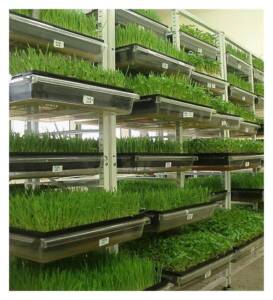No products in the cart.

Fodder Types, Benefits, and Impact on Agriculture
Fodder: Everything You Need to Know
Fodder plays a crucial role in agriculture and animal husbandry. It’s not just about feeding animals; it’s about ensuring they get the right nutrition to thrive. In this article, we’ll explore the various aspects of fodder, its types, benefits, and its impact on the environment.

Table of Contents
| Sr# | Headings |
|---|---|
| 1. | What is Fodder? |
| 2. | Importance of Fodder |
| 3. | Types of Fodder |
| 4. | Nutritional Value of Fodder |
| 5. | Fodder Cultivation Techniques |
| 6. | Environmental Impact of Fodder |
| 7. | Fodder in Animal Husbandry |
| 8. | Future of Fodder |
| 9. | FAQs About Fodder |
| 10. | Conclusion |
What is Fodder?
Fodder refers to agricultural foodstuffs that are given to livestock, primarily cattle, horses, and sheep. It includes hay, straw, silage, compressed and pelleted feeds, oils and mixed rations, grains, and legumes.
Importance of Fodder
Fodder is essential for maintaining the health and productivity of livestock. It provides the necessary nutrients such as protein, vitamins, and minerals that animals need to grow and produce. Without proper fodder, animals can suffer from malnutrition and related health issues.
Types of Fodder
Hay
Hay is dried grass, legumes, or other herbaceous plants that are cut and stored for use as animal fod-der. It’s rich in fiber and is commonly fed to horses and cattle.
Silage
Silage is fermented and stored green fod-der that’s fed to cattle, sheep, and goats. It’s preserved through anaerobic fermentation which keeps it nutritious for longer periods.
Concentrates
Concentrates are feeds that are high in energy and low in fiber, such as grains, oilseeds, and their by-products. They are typically used to supplement other types of fod-der.
Nutritional Value of Fod-der
Fod-der is packed with essential nutrients that are necessary for the growth and development of animals. It includes proteins, carbohydrates, fats, vitamins, and minerals that ensure the animals are healthy and productive.
Fod-der Cultivation Techniques
Crop Rotation
Crop rotation is crucial in fod-der cultivation to maintain soil fertility and health. It involves planting different types of crops in a sequential manner to optimize nutrient use and pest control.
Irrigation
Irrigation plays a vital role in fod-der cultivation, especially in dry regions. Proper water management ensures the crops grow well and produce high-quality fod-der.
Environmental Impact of Fod-der
Fod-der production can have both positive and negative environmental impacts. It can lead to deforestation and habitat loss, but it also supports sustainable agriculture and reduces erosion.
Fod-der in Animal Husbandry
Dairy Farming
Dairy farming heavily relies on fod-der to ensure cows produce high-quality milk. Proper nutrition from fod-der improves milk yield and cow health.
Poultry Farming
Poultry also benefits from fodd-er, which provides the necessary nutrients for egg production and growth.
Future of Fod-der
The future of fod-der lies in sustainable practices and innovations in agriculture. Researchers are exploring new ways to increase fod-der yield and improve its nutritional value.
FAQs About Fod-der
What are the benefits of fod-der for livestock?
Fod-der provides essential nutrients like proteins and vitamins, promoting animal health and productivity.
How is silage different from hay?
Silage is fermented and stored green fod-der, while hay is dried and preserved through natural drying methods.
How can I improve the quality of fod-der?
You can improve fod-der quality through proper irrigation, fertilization, and selecting high-quality seeds.
Is fod-der production harmful to the environment?
It can have environmental impacts like deforestation, but sustainable practices can mitigate these effects.
What is the role of concentrates in animal diets?
Concentrates provide high energy and complement the nutrient profile of other fod-ders, enhancing animal health and productivity.
Conclusion
In conclusion, fod-der is indispensable in animal husbandry and agriculture. It ensures animals receive the necessary nutrients to remain healthy and productive. As we move forward, sustainable practices in fod-der cultivation will be crucial to minimizing environmental impacts and supporting global food security.
This article provides a comprehensive overview of fod-der, covering its types, benefits, and cultivation techniques. Whether you’re involved in animal husbandry or simply curious about agriculture, understanding fod-der is essential to appreciating its impact on our food systems and environment.
Go and turn on towards organic farming to save future and thire save childs:
Elevate Plant Growth with Premium Bone Powder – Buy Now!
Organic Cow Dung Compost: Transform Your Garden Naturally
Premium Humic Acid for Healthy Plants | Enhance Soil & Boost Growth
Boost Plant Growth Naturally with Mustard Cake | Organic Fertilizer
Transform Your Garden with NPK Fertilizer | Boost Growth by 30%
Premium Perlite for Enhanced Gardening | Buy Now
Live Earthworms with Enhance Your Garden (soil health)
1 Neem Khali: Unveiling the Wonders of Nature
1Transform your garden with vermiwash-buy now
1 Premium quality Vermicompost [ केचुआ खाद ]
Follow us:


